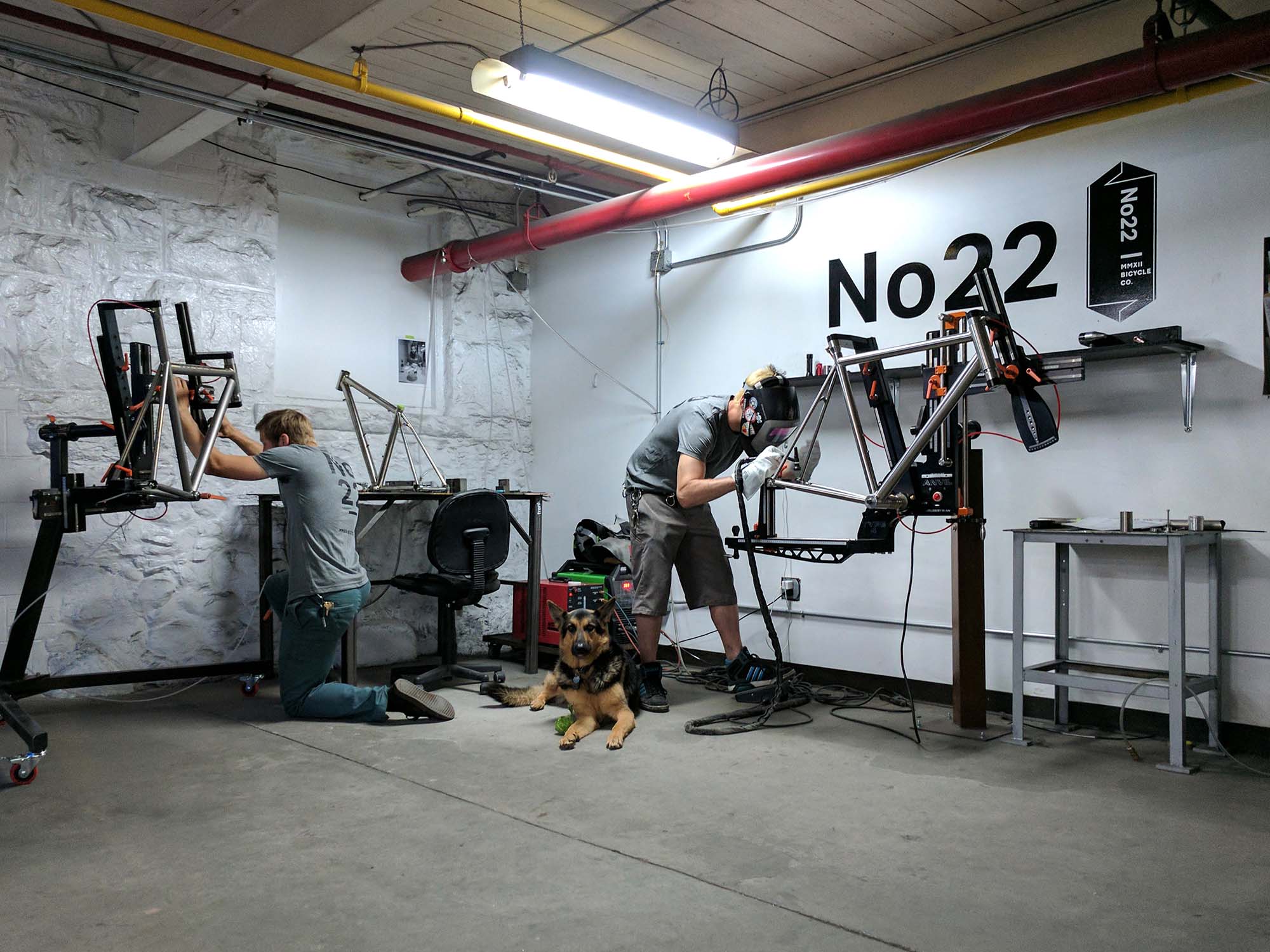
In its simplest form, a weld is the joining of separate pieces of metal by heating the surfaces to the point of melting and uniting them. In the case of bicycles, welds are used to to join the tubes together to form the structure of the frame.
All forms of welding can be challenging, and welding titanium can be particularly difficult. The No. 22 welding team takes a number of steps to ensure the strength, consistency and durability of our welds to ensure each frame that leaves our factory meets our class-leading quality standards.
Surrounding material expansion and contraction
When heat is applied to any material, it will expand and then contract as it heats and cools. Welding is an extreme example of this, with an arc temperature of up to 11,000°F or 6,100°C. The resulting expansion and contraction, when not properly accounted for, can distort and degrade the surrounding material. Our welding team has developed a multi-step process that ensures the strength of our welds and the quality of each frame.
The first element is that each weld is treated as a two-step process. The first welding pass ensures that the tubes are completely joined for ultimate strength. The second “finishing” pass further secures the welded tubes, and cosmetically allows for the coveted stack of dimes finish. This process is far more time-consuming than a single-pass weld, but the result is a stronger, more consistent weld with better penetration into the welded material.
The second measure revolves around our purpose-built frame alignment table. Each frame makes as many as 10 trips to the alignment table through the welding process to correct small distortions that result from the heating and cooling of each weld. This allows minor adjustments to be made to the frame, if required, throughout the process. To save time some manufacturers save alignment until after all of the welding is complete, which can lead to larger misalignment issues that are difficult, if not impossible to correct. Just like our two-pass welding process, our alignment approach is more time-consuming, but the result is a straighter frame with far tighter alignment tolerances.
Airborne and surface contamination
Without careful control, all welds can be subject to contamination. A contaminated weld results in a joint that is susceptible to cracking and even failure. When welding titanium, contamination is possible from both airborne and surface borne materials.

To combat airborne contamination from elements such as oxygen, our welding team fully purges each tube inside and out during welding with argon, an inert gas. The argon fully displaces the air surrounding the weld, avoiding contamination and overheating of the material as it is welded.
To reduce the possibility of surface contamination, our tubing is fully polished in our tube polishing machine to remove the surface material, exposing fresh titanium fit for welding. Immediately before welding the tubing is cleaned carefully with a solvent to remove any final traces of impurities. From this point on, the tubes are handled with clean gloves to avoid picking up any oils or other contaminants.
Experience required for strong welds
In his book Outliers, Malcolm Gladwell referred to something called the “10,000 hour rule”, arguing that to truly master activity you need to put in a tremendous number of hours of practice. This holds true for welding: nothing beats experience.

The No. 22 welding team is led by Frank Cenchitz, who personally has over 20 years of welding titanium bike frames. Sam Dries, our young prodigy (and hotshot CX racer) has added nearly three years of training under Frank to his previous welding experience. This knowledge and experience results in every weld being structurally sound with even penetration, and also aesthetically pleasing enough to fit with the other elements of a No. 22 frame.
Have a question for us about our welds, or titanium welds in general? Leave it in the comment section below, or reach out to us by email any time at info@22bicycles.com.



